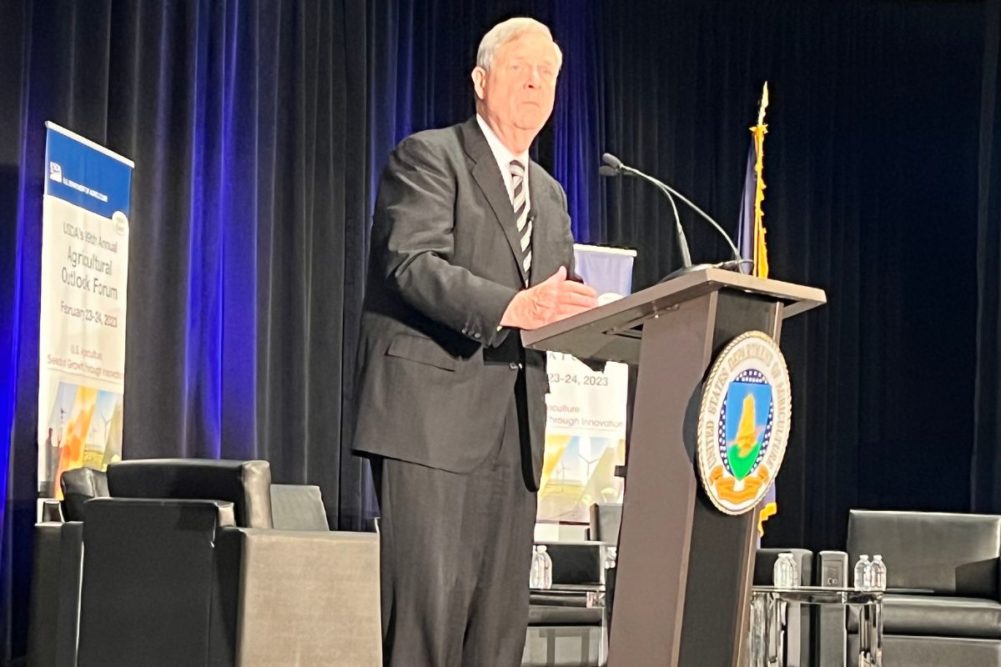WASHINGTON, DC, US — To Secretary of Agriculture Thomas Vilsack, “Seeds of Growth Through Innovation” is not only the theme of the 99th annual Agricultural Outlook Forum, but a “truly remarkable” direct continuation of a long tradition throughout US history.
In his keynote address at the US Department of Agriculture’s flagship event, Vilsack reminded an audience of about 5,000 live and virtual attendees from throughout the food production supply chain and adjacent sectors about the innovations that formed today’s US agricultural system that feeds the domestic population and a significant portion of the world.
He spoke of Abraham Lincoln, 16th president of the United States, who saw the need for agriculture research and knowledge in a food-secure democracy that inspired him to create a government agriculture departmen in 1862t to help rural communities prosper and led to the land-grant university systems and the extension opportunities of today.
It was some 60 years later amidst the Dust Bowl and the Great Depression of the 1930s, Vilsack said, when Secretary Henry Wallace pushed for farm income stabilization, conservation investment and the establishment of a supply management system in place for 60 years until Secretary Earl Butz, envisioning the growing global population, repositioned American agriculture front and center and asked farmers to plant “fencerow to fencerow,” after which America became a food-secure nation and began an export program that modern agriculture depends on significantly.
“In my lifetime, the productivity of American farmers has improved by 17 times,” he said. “It’s truly a remarkable story of innovation.”
Continuing his history of the modern domestic ag sector, Vilsack explained that increased productivity increased the cost of seeding a crop, which encouraged farmers to spread the cost over increasingly larger areas, which eventually impacted rural populations. Productivity and innovation also began to diminish “one of the most precious resources in the country, our topsoil,” he said.
Recent years featured all new challenges, including a global pandemic, an invasion and year-long war in a key global grain market and climate change effects such as drought and wildfire.
“We learned from these experiences of these challenges that American agriculture was extraordinarily efficient and our food system was amazingly efficient, but wasn’t as resilient as we needed it to be,” Vilsack said. “We rebounded from all of these conflicts and challenges, and over the last two years we’ve enjoyed record farm income, and the chief economist’s report today suggests that we won’t set a record this year but suggests we will have income that is better than the historical average and in fact the past couple of years have beat the historical income by 50%.”
That fact belies a truth about who benefited from record-high income, with one USDA Economic Research Service report finding that nearly 50% of farmers over the past several years have had negative income and another 40% of farmers saw profit, but from off-farm income, he said.
“While we had record income, large commercial-sized operations did very well, and they should after investing a lot of time and energy in producing an extraordinary crop, but the other 90% or so struggled,” he said. “So that’s why I think we’re at a pivotal moment. We have to ask ourselves a serious question about whether we want a system that continues to see further consolidation and the impacts that has on farmers and rural communities, or whether we’re innovative enough to figure out a new way, a different way, an expanded opportunity so that where we have record income, it’s shared not by a few but by many and most.”



